You can’t trust anyone these days. Sure, they’re following your commands, but how do you know they’re not selling your secrets to the highest bidder? And don’t get me started on “Safe Houses”—just because your agents are holed up doesn’t mean they can’t get abducted or killed. Welcome to the world of The Agents, a card game about double-dealings and backstabbings.
The Agents was originally funded through a Kickstarter campaign in August 2013. It was a modestly-priced card game (with a few expansion options) with a funding goal of $6,000, yet it managed to raise just over $275k, with thousands of backers chipping in for a copy of the game. It even managed to deliver fairly quickly, only about a month behind schedule, despite some initial fears from some that designer Saar Shai was trying to pull a fast one.
Now that the game has been out in the wild for a while, Shai wants to make it even better. Because he was pressed for time to get the first edition delivered, there were some things that were a little rushed: a couple cards have typos on them, and the rules could have been refined. The box for the base game is fine, but it’s too small to hold the half dozen expansion packs, which came in sub-par tuckboxes that barely qualify as packaging. With so many people playing the game and offering feedback, Shai was able to tweak the rules a little and streamline the rulebook to make it easier to learn.
Let me introduce you to The Agents: Mark II, new and improved. Spoiler alert: it just launched yesterday, and by last night it had already hit its $30,000 funding goal within the first day.
At a glance: The Agents is a card game for 2 to 5 players, ages 8 and up, and takes 20-40 minutes to play. The pledge level for a copy of the game is $18, with several optional expansions (both old and new) you can add on. If you already own the current version there’s a reward level called “Reinforcements” that just includes the new expansions, plus you may want to spring for the fancy box as an add-on. One note for parents: while the gameplay is probably fine for kids, it is a game about spies and thus involves killing and weapons. In addition, some of the agents in the Spoofs expansion include some with a little innuendo that may be more PG or PG-13.

Components:
Lots of cards: Agents, Missions, and IPs (Intel Points). The number you get depends on the number of expansions you want to throw in.
The artwork by Danny Morison is one of the things that drew me to the game; it has a similar aesthetic as B.P.R.D., with sharp angles and flat patches of color, and it suits the game well.
The cards from the first Kickstarter campaign were upgraded to plastic cards through a stretch goal. They’re a thin plastic with a matte finish, and I imagine you can spill things on them and just wipe them off. (I’m not volunteering to try it out.) They do feel different, though so far only one of my friends has complained about that. The one downside was that because of the time crunch to get them delivered, Shai had the printed sheets sent to him and punched out the cards from the sheets himself, which left little nubs similar to what you get from punching out cardboard bits. They’re not horrible, but it’s weird to have cards that have those nubs on the edges. I’m not sure if this campaign will result in the same thing or not.
How to play:
If you’ve already played before and you just want to know what’s changed in the new ruleset, here are the main differences:
- Play to 50 IPs, rather than 40 and then complete the round.
- During set up, reveal 4 Mission cards. These may be purchased for 3 IPs, and the cost of Missions from the deck is reduced to 2 IPs.
- When an Agent is played facing you by another player, using the command immediately is optional rather than mandatory.
- Free Agents may be activated immediately when played, or reactivated as an action on your turn and then retired.
- On your turn, you may take up to 2 actions—you don’t have to use both of them if you don’t want to.
- You may now trade in Agent cards as well as Mission cards.
Now, on to the rules.
The goal of the game is to be the first to reach 50 IPs (Intel Points), which you get via data tokens, free agents, and missions.
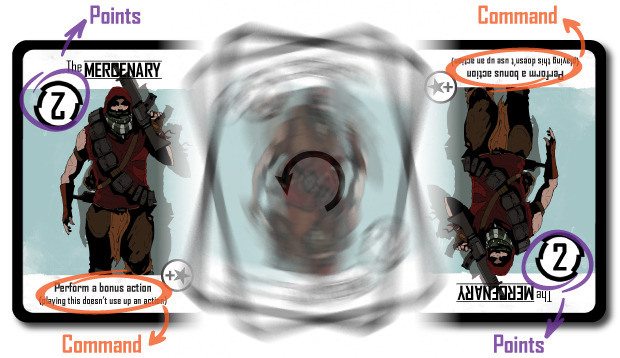
One of the keys to the game is that each Agent may be played facing you or another player—one of you gets the benefit of the command, and the other player gets to score points. Throughout the game you have to decide how to play your cards because there’s always the chance that your Agent will help your opponent as much as it helps you.
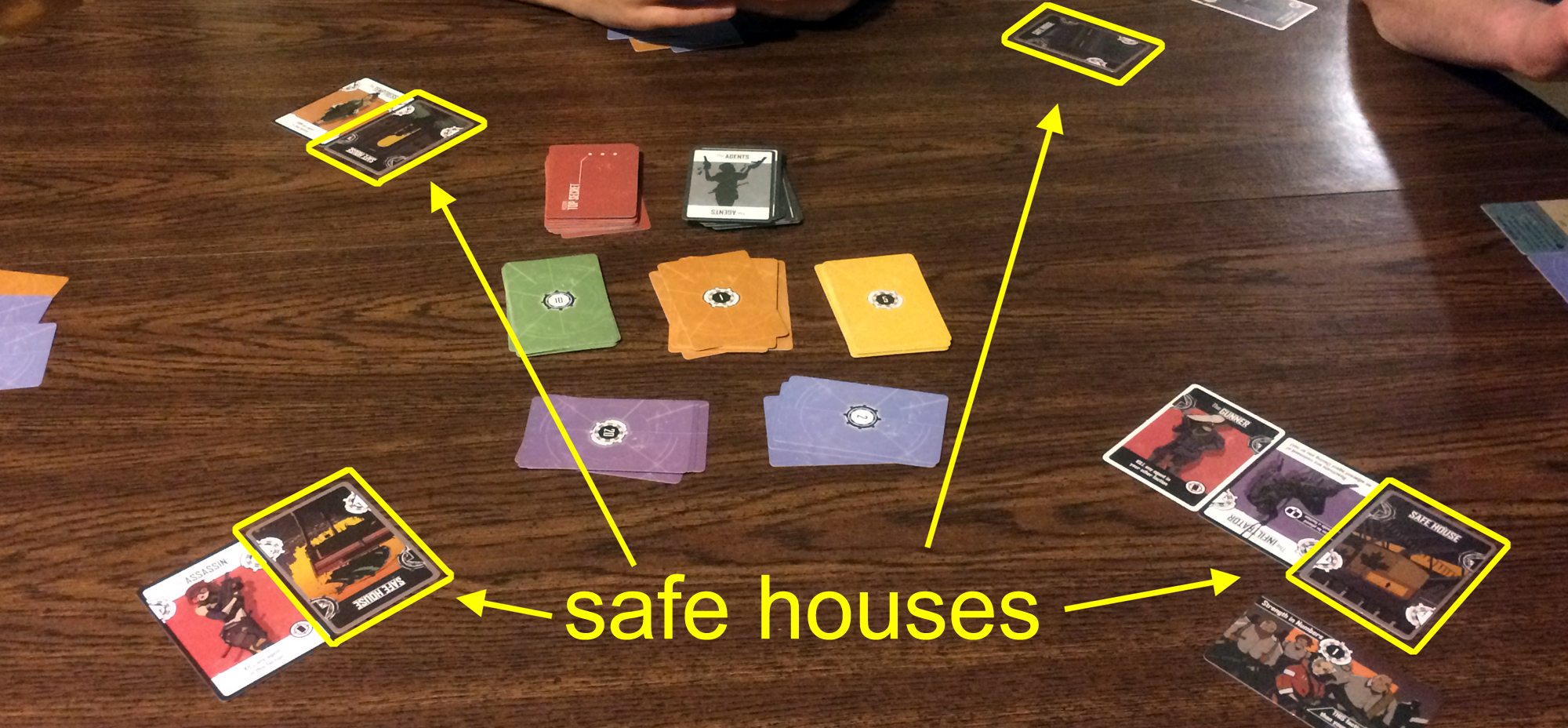
Each player starts with 3 Agent cards and 1 Mission card, as well as some IPs, which also serve as the currency of the game. A Safe House card is placed between each pair of players, so that each player has one on to their right and to their left. (In a two-player game, two Safe Houses are placed between the players.) Finally, four Mission cards are turned face-up as “revealed missions.”
Your turn consists of the following phases: Actions, Missions, Score.
During the Actions phase, you may perform up to two actions from the following choices (and you may use the same action twice):
- Play Agent
- Reactivate a command
- Buy Agents and Missions
- Trade in Agents and Missions

Play Agent: There are two types of Agents: Faction Agents and Free Agents. Faction Agents have data token halves (the arrow icons) on the edges, which must be matched up with other halves in order to score points. They are played on one of your two factions, and must be placed one one of the ends of the row, not in the middle. As soon as they’re played, the player that the Agent faces may immediately activate the command if desired. Free Agents have a data token number rather than the half-arrows, and can be played toward any player—these do not go into the factions. The player the token faces immediately scores those points, and the other player may use the command immediately or save it for later. However, the Free Agent commands are a one-time use, and the agent is retired (discarded) after the command is activated.
Each faction may have up to 5 Agents (including dead ones) in a 3-5 player game, or up to 7 Agents in a 2-player game.
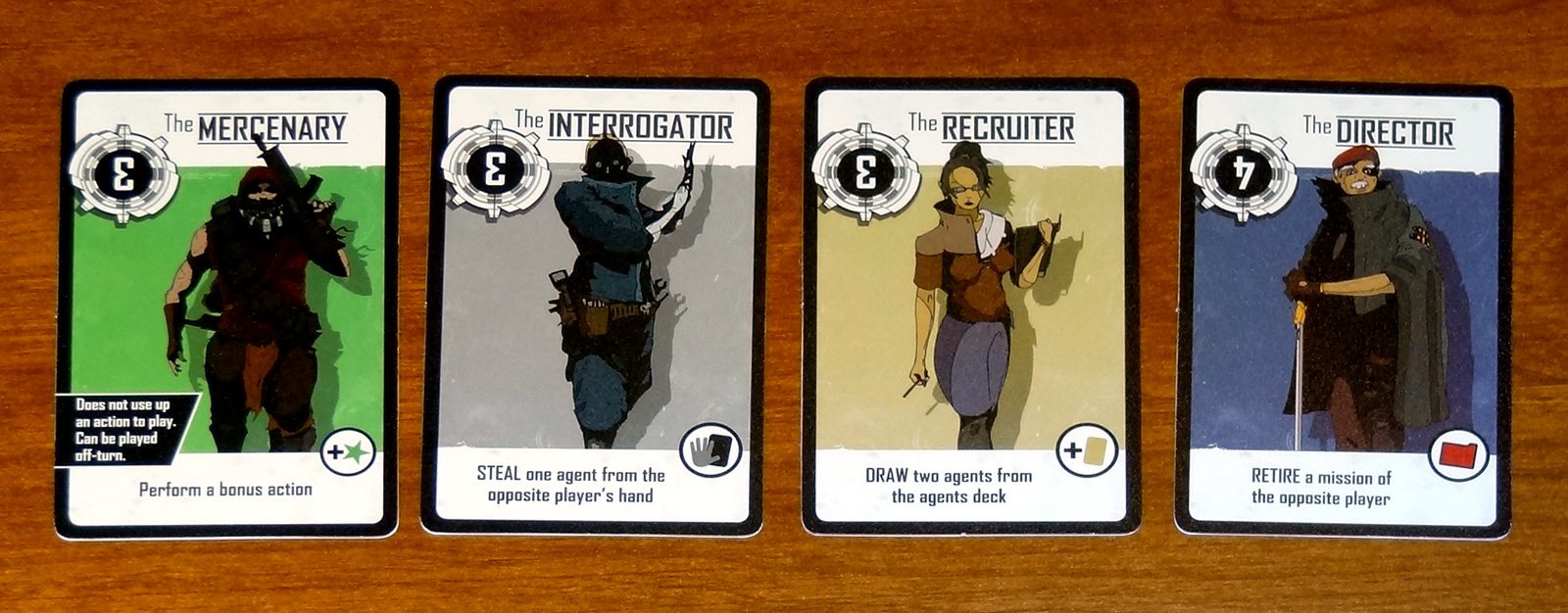
Reactivate a command: You may pick any agent facing you in your factions and use their command—these may allow you to move agents around, turn agents 180 degrees, kill agents (flip them face down), extract agents to your hand, and so on.
Buy Agents and Missions: Pay IPs to the supply to take more cards. Agents cost 1 IP, Missions cost 2 IPs, and revealed Missions cost 3 IPs.
Trade in Agents and Missions: Discard any number of Agents and Missions and draw the same number from those decks.
After your Action phase, you may then rearrange Missions. You may play up to two Missions on each of your factions (no duplicates on a faction), and during the Missions phase you may move Missions between your two factions, retrieve them back to your hand, or play Missions from your hand.

Finally, you score points. You get one point for each full data token that is pointing toward you, plus another point if the two halves are the same color. You also get points for Missions if you fulfill the requirements. For instance, in the photo above, the “Man Down” mission awards one point per dead Agent in the faction. There is one dead Agent, so it’s worth a point. The other Mission, “Code of Honor,” requires that all the live agents in this faction are facing me. That’s not true in this case, so I don’t score the 2 points for the mission.
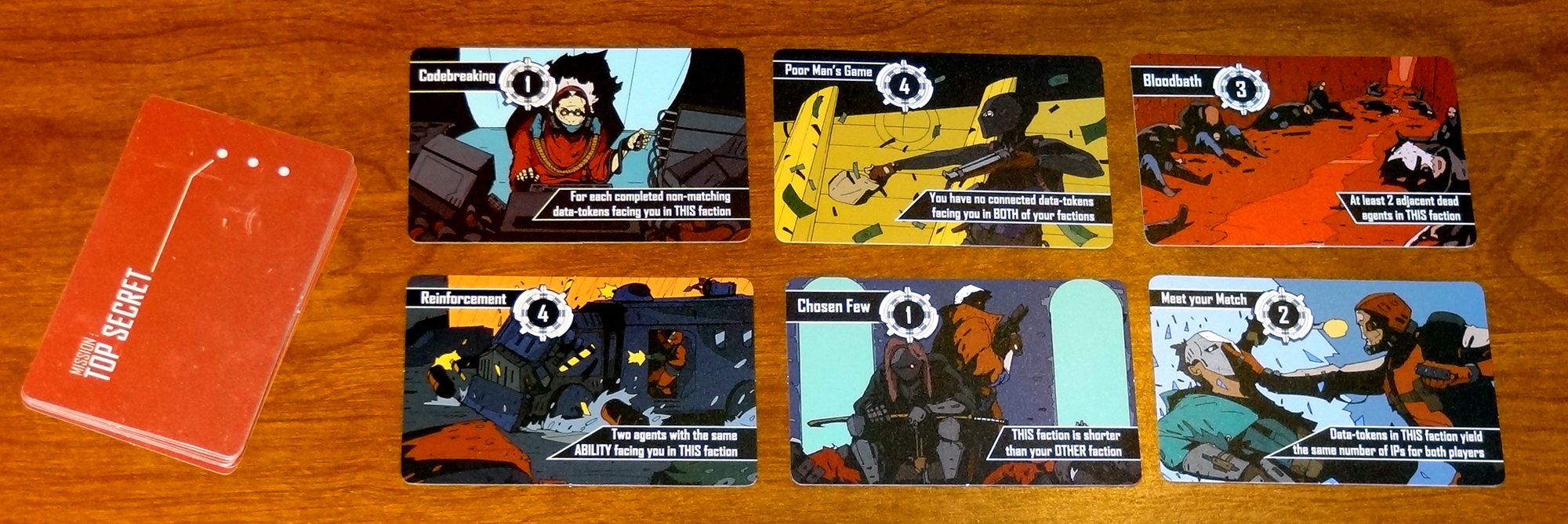
Note that Missions are not discarded after you complete them—you continue scoring points for completed Missions every turn as long as you still fulfill the requirements, so they can be a valuable source of IPs if you can maintain your factions.
Once you’ve scored, play passes to the next player. The game ends immediately when somebody reaches 50 IPs.
I have not yet had a chance to play with the various expansions, though I’ve read through the rules and looked at the types of cards included. There are more agents and missions, including some that have new mechanics. For instance, Partners introduces faction agents that are partnered with other agents in your faction: they don’t count toward the agent limit and are instead played below the regular faction agent.
The three new expansions, Events, Break the Rules, and Bounties, all introduce some other new mechanics as well. (As a bonus, Bounties includes point tokens, which would be a nice improvement over the cards.)
The Verdict
The double-sided nature of the cards is what really gives this game its flavor: every time you use an agent, you have to balance points and abilities—which are you giving to an opponent, and which do you keep for yourself? Sometimes when you time it right, you can give yourself points while giving your opponents commands that don’t benefit them immediately … but eventually those abilities may add up. Or you might have some great abilities lined up in a faction, but maintaining those abilities means that the player opposite you just keeps racking up points.
I also like the fact that buying agents and missions costs you points—you’ll need to spend at least some points to buy something eventually, but the question is how much you can risk spending, and how much you’ll get back for whatever it is you’re buying.
The game is pretty quick, although players can get bogged down in analysis paralysis if you let them. Generally, though, since each player only gets two actions, a turn goes pretty quickly, and since there’s a chance you’ll get an action during somebody else’s turn, there’s not as much downtime where you’re not interested in what’s going on.
The updated rules aren’t a huge difference from the original, but there are enough little tweaks that it does feel more streamlined, and the rulebook itself is better organized. If you don’t have The Agents already, it’s worth checking out the Kickstarter. If you do own it already, check for the update kit (or just download the new ruleset) so you’re playing with the latest version.
The Agents really drives home the idea that nothing in life is free, and I like that. In nearly every game, any choice you take has a cost of some sort (sometimes just an opportunity cost), but in this game the cost is right up front. Just because it’s obvious doesn’t mean it’s an easy choice, though, and that’s what I love about the game. I think the game mechanics work fine for kids, but it’s up to you whether you’re okay with the themes: betrayal, killing, abduction, espionage, and so forth.
The “quick and dirty” campaign is a chance to fix a few things from the original, and to bring new backers into the game. Overall, I think it’s a pretty good value for the gameplay. For more about The Agents, visit the Kickstarter page.
Update: For those of you who backed The Agents the first time around, Update #1 has a little info about some more options for bringing your original set up to speed. Returning backers now get revised Base set cards and typo fixes for free, a hard copy of the new rulebook and the new box for $4, and a bundle of the just the expansion changes and new boxes for the expansions for $4. Or, if you want all of that, plus the three new expansions and all the stretch goals, you can go for the “Agents Survival Kit” tier for $28.
Disclosure: GeekDad received a review copy of the original game.



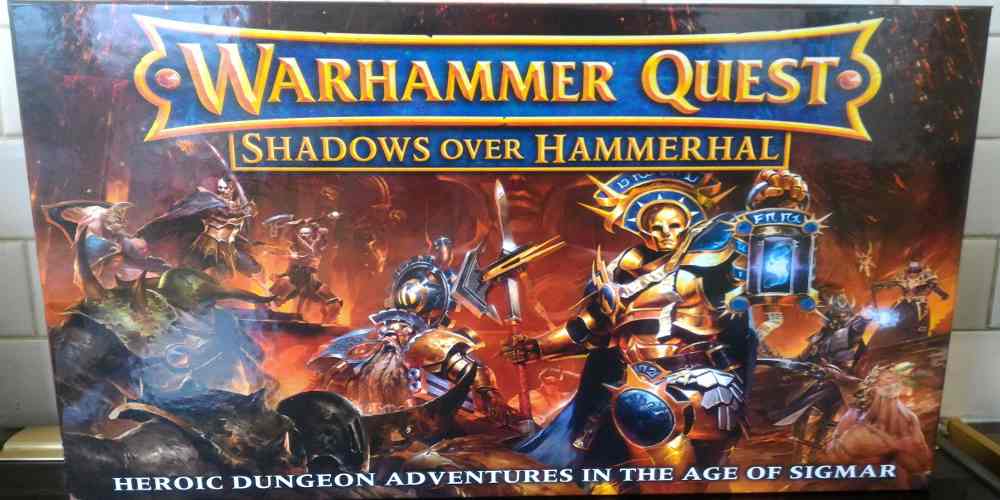

Awesome review from Jonathan for an awesome game.